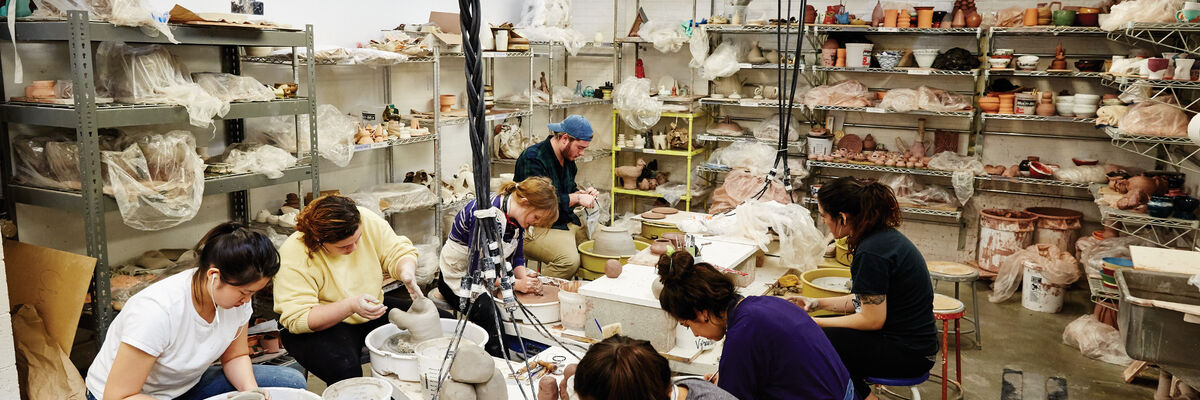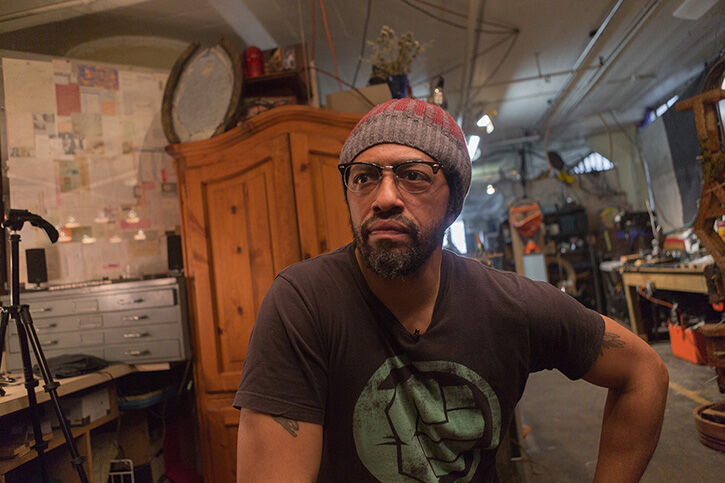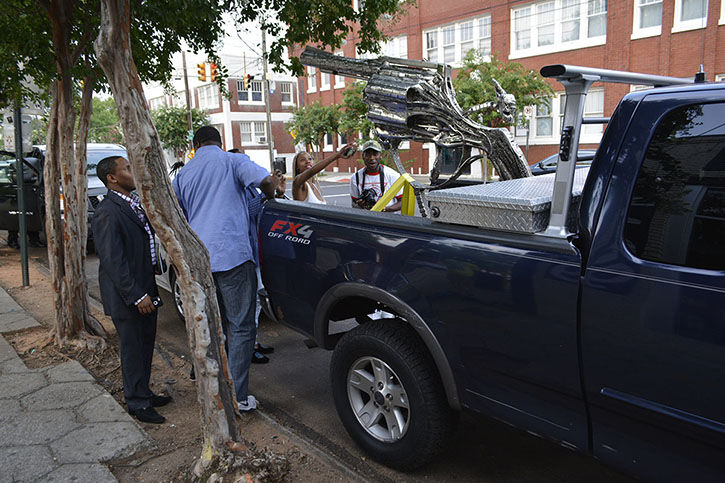
Conversation Peace

by Bridget Esangga
The gun is seductive. An old-school .38-caliber revolver made of 400 pounds of welded stainless steel plates gleams in the back of a pickup truck. When it is parked, it draws its audience close, and that is exactly what sculptor, researcher, and SAIC alum Garland Martin Taylor (BA 2005, MA 2007) intended for his sculpture Conversation Piece.
On the gun, Taylor stamps the names of children in 13 Chicago neighborhoods who have died as a result of gun violence. The youngest of the nearly 300 children Taylor has memorialized so far is one-year-old Cynia Cole, who was killed by a bullet in the back seat of her car in Chicago’s Chatham neighborhood. “[Viewers are] drawn in by the image of the gun, and when they get there, they are forced to deal with the issue of Black babies dying,” says Taylor.
Taylor has already driven the sculpture across the country, presented it at Chicago Ideas Week last fall, and exhibited it at the Museum of Science and Industry’s Black Creativity Juried Art Exhibition in Chicago.
As the city’s homicide rate soars, Taylor stopped adding names to his list because it was growing faster than he could stamp names. In the first three months of 2016, homicides are up 84 percent over the same period last year. Some day he plans to complete the list.
Conversation Piece is a three-dimensional political cartoon inspired by the first black political cartoonist, Henry Jackson Lewis, who worked for the Indianapolis Freeman newspaper. “I saw those drawings, and they inspired my work. I needed to know who this man was,” says Taylor. He credits his education in Visual and Critical Studies at SAIC for training him to study and research Lewis and his work, eventually publishing papers about it.

“Just like the shootings we have now, lynching was proliferating [in the 1890s]. And I’m reading about this, and I’m seeing that Lewis is risking it all to portray this,” Taylor explains. He decided to make Conversation Piece to see if his art could reach the same point.
Taylor drove the sculpture across the country to “circulate” it just like a political cartoon in a newspaper, and that is how the conversations started. He met people who lost loved ones to gun violence. He met a 12-year-old black girl on the South Side of Chicago who said, “You can put my name on there if I die!” And he recorded conversations in the country of men joking about putting a Confederate flag in the barrel of the gun or placing the sculpture on their lawn.
“There’s this real divide between folks in the neighborhoods affected by these deaths and folks in the country who use guns like a tool. These conversations are not happening. We’ve got to, at the very least, learn compassion for one another. What I learned from this whole trip is all that is missing is compassion,” says Taylor.
